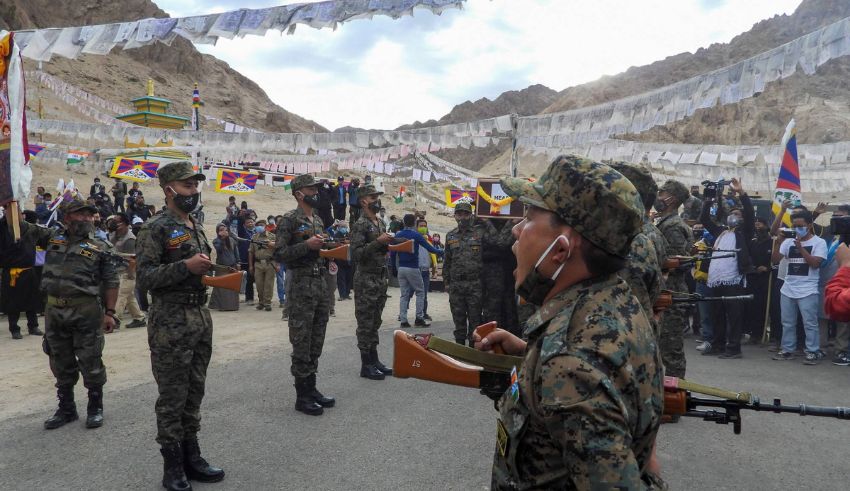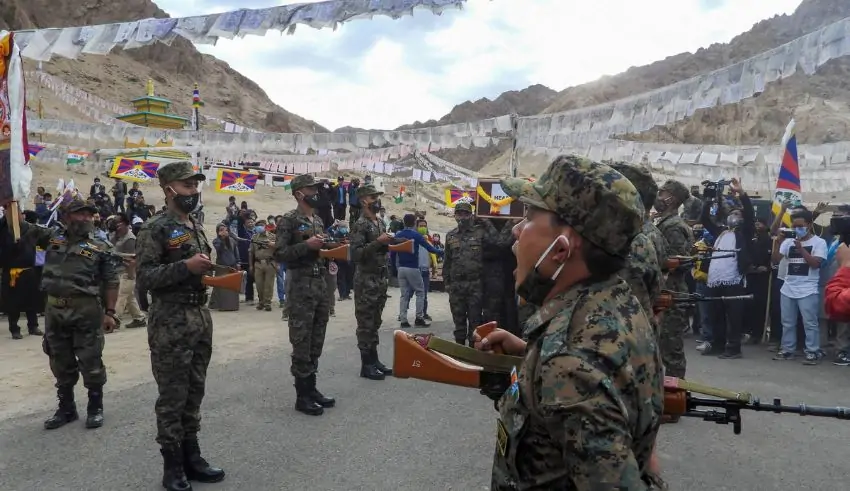

(C) The Japan Times
Tibet, also known as the Tibet Autonomous Region (TAR), is a vast and mountainous region in western China, bordering India, Nepal, Bhutan, and Myanmar. Tibet has been under China’s control since 1950, when the People’s Liberation Army (PLA) invaded and occupied the former independent kingdom. Tibet has been a source of tension and conflict between China and India, as well as between China and the Tibetan people, who have resisted China’s rule and sought greater autonomy and freedom.
Tibet is strategically important for China, as it serves as a buffer zone and a gateway to South Asia, as well as a source of natural resources and water. China has invested heavily in developing Tibet’s infrastructure, such as roads, railways, airports, and dams, to enhance its connectivity and accessibility, as well as its economic and social development. China has also deployed and modernized its military forces and assets in Tibet, to strengthen its defense and deterrence, as well as its projection and influence.
In January 2024, China announced a new plan to invest 80 billion yuan ($11.2 billion) in Tibet’s infrastructure by 2035, which includes 10 new airports, 47 temporary landing points, and several railway and highway projects. The plan is part of China’s broader vision to establish a three-dimensional transportation network in Tibet, and to integrate it with other regions in China and South Asia.
Tibet poses a serious threat and challenge for India, as it enables and facilitates China’s military aggressions and ambitions along the disputed and volatile border between the two countries. China and India have fought several wars and skirmishes over their border, most notably in 1962, 2017, and 2020, and have failed to resolve their territorial and strategic disputes. China claims about 90,000 square kilometers of Indian territory, mostly in Arunachal Pradesh, which it calls “South Tibet”. India claims about 38,000 square kilometers of Chinese territory, mostly in Aksai Chin, which it considers part of Ladakh.
Tibet also undermines and challenges India’s security and interests in the region, as it allows China to exert its influence and interference in the affairs of India’s neighbors, such as Nepal, Bhutan, and Myanmar, and to undermine India’s role and leadership in the South Asian Association for Regional Cooperation (SAARC) and the Bay of Bengal Initiative for Multi-Sectoral Technical and Economic Cooperation (BIMSTEC).
China has also used Tibet as a leverage and a bargaining chip in its relations with India, and has opposed and criticized India’s support and hospitality for the Dalai Lama, the exiled Tibetan spiritual leader, and the Tibetan government-in-exile, which are based in India.
India faces a difficult and urgent task of dealing with Tibet, as it affects its national sovereignty and security, as well as its regional and global position and role. Some of the possible solutions and strategies for India to deal with Tibet include:
Emerging as the economic powerhouse of the world over the past few decades, Asia is truly going through something unprecedented.…
Singapore Airlines (SIA) resumed flights to London Heathrow Airport after a citywide power failure brought massive disruption on March 21.…
Japanese officials joined South Korean and Chinese foreign ministers in Tokyo to plan a summit based on historical turning point…
According to the most recent data produced by the Bank for International Settlements and released on Thursday, South Korea's total…
Hong Kong billionaire Li Ka-shing sold Panamanian port terminals to a US-led group, causing diplomatic conflicts between Washington and Beijing…
In a major setback for Korea's burgeoning stars, a court in South Korea has ruled against NewJeans, disregarding their effort…
This website uses cookies.
Read More